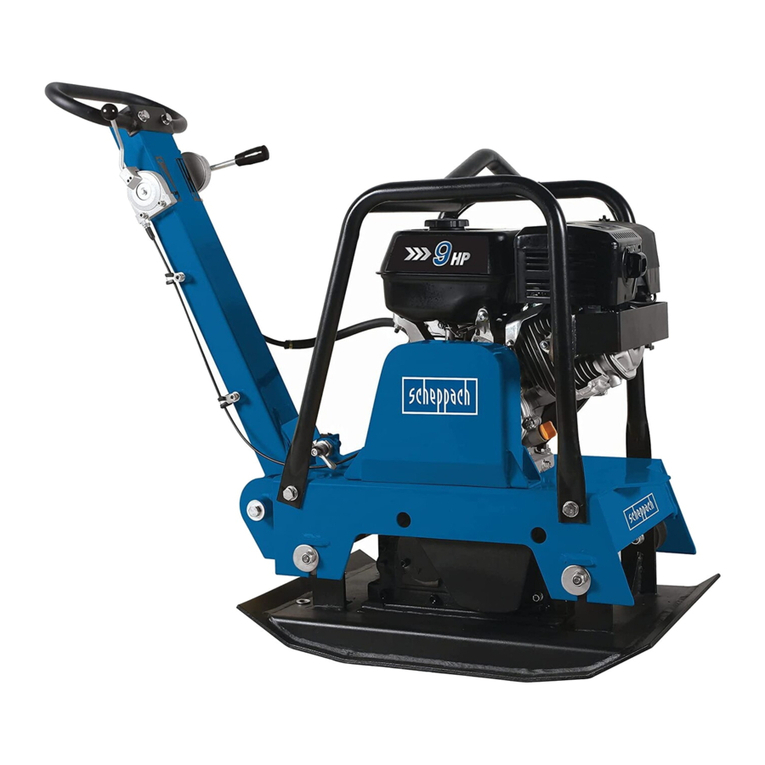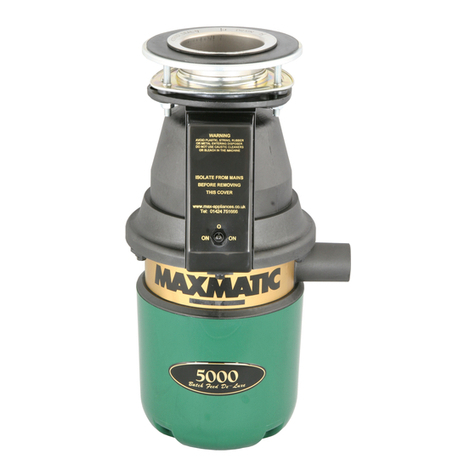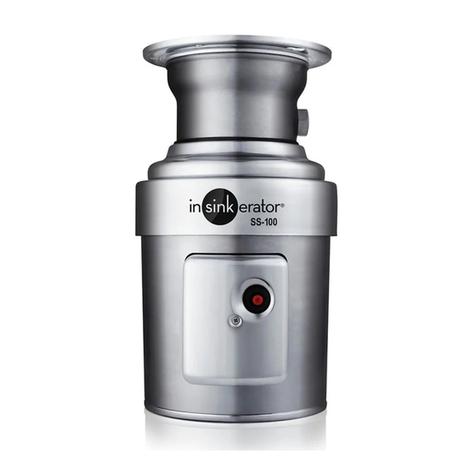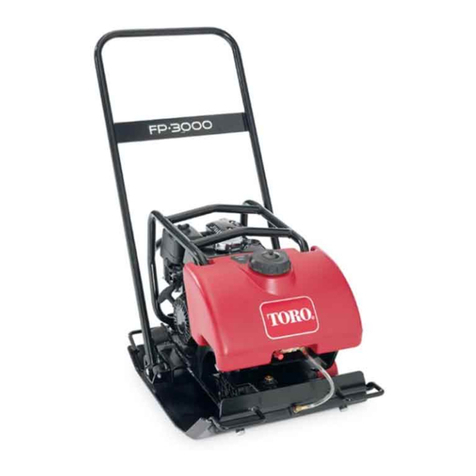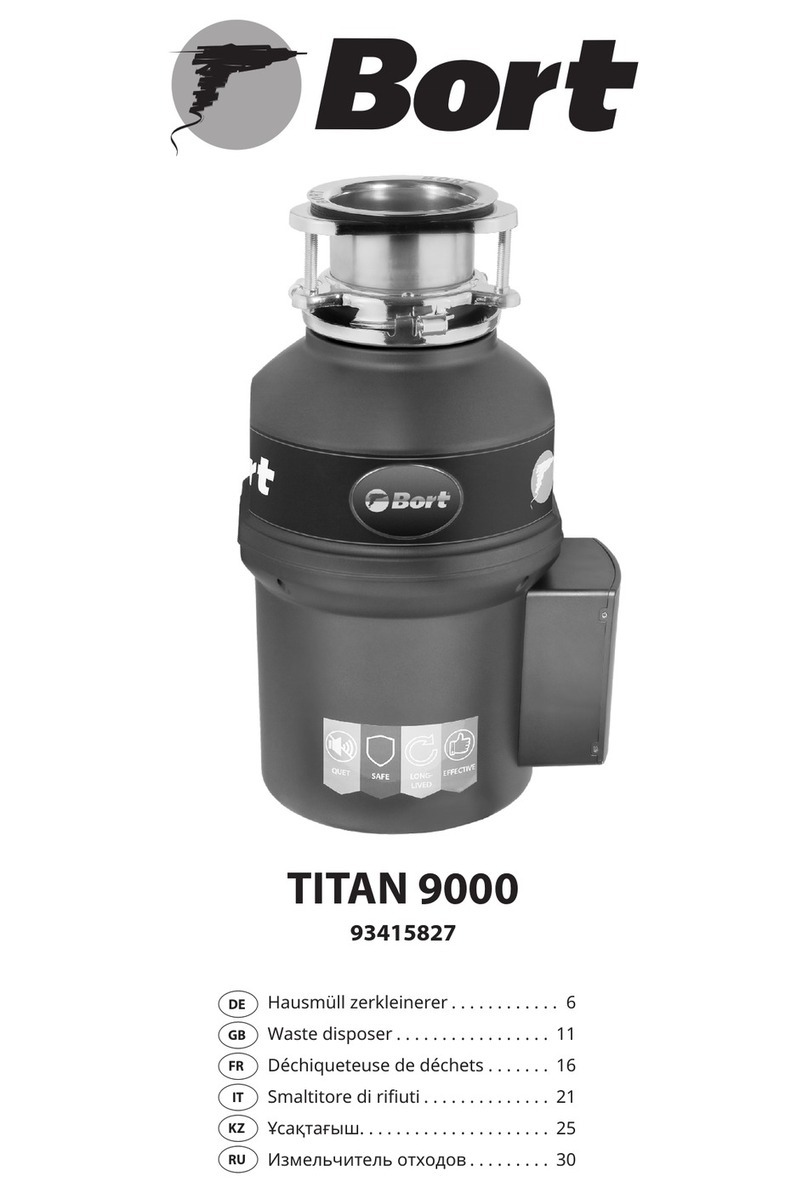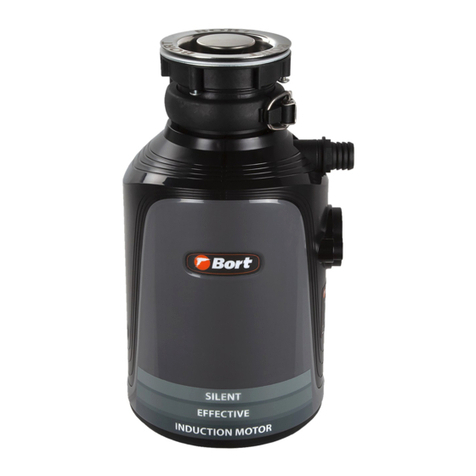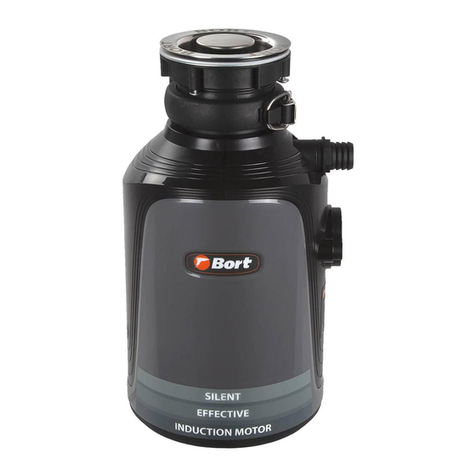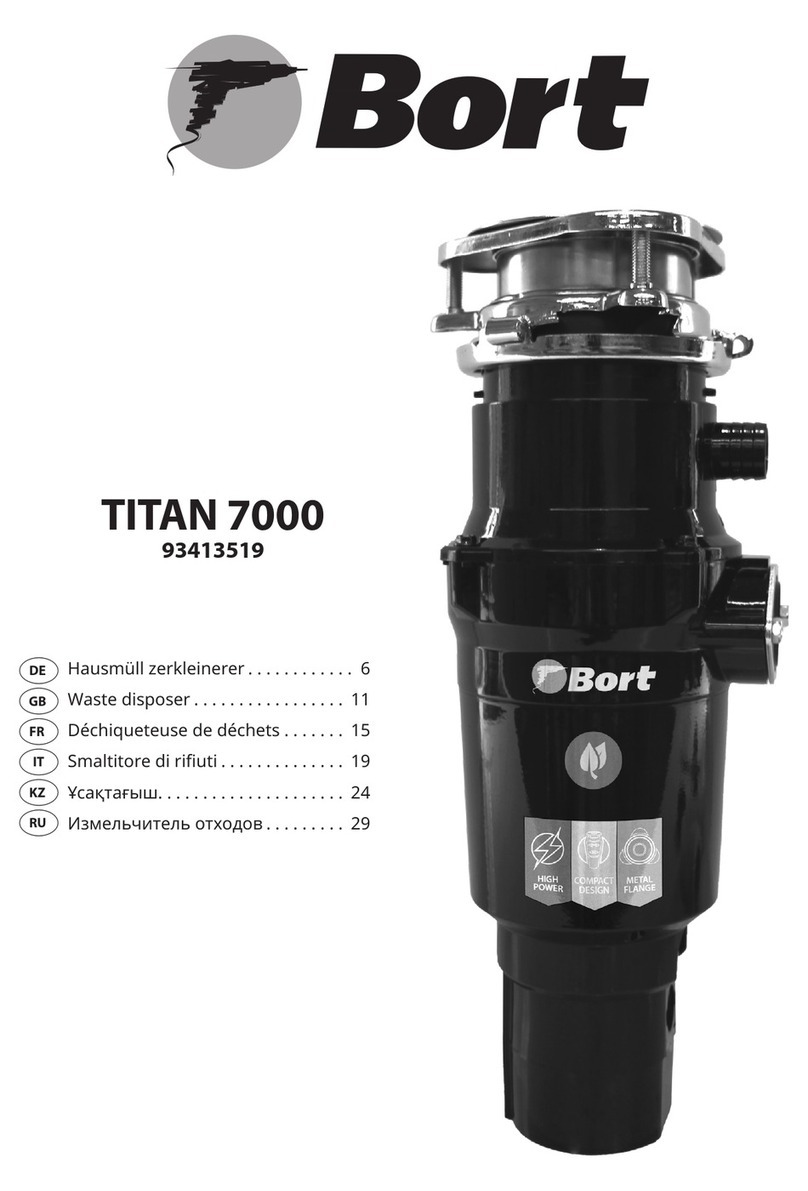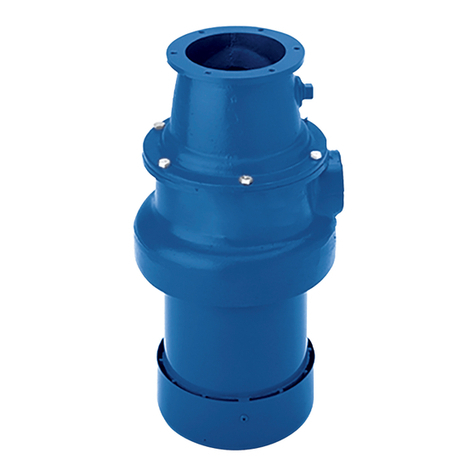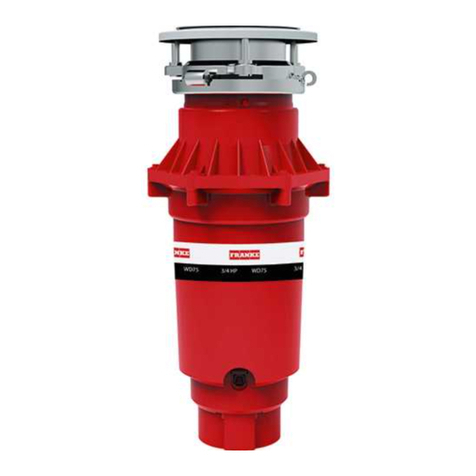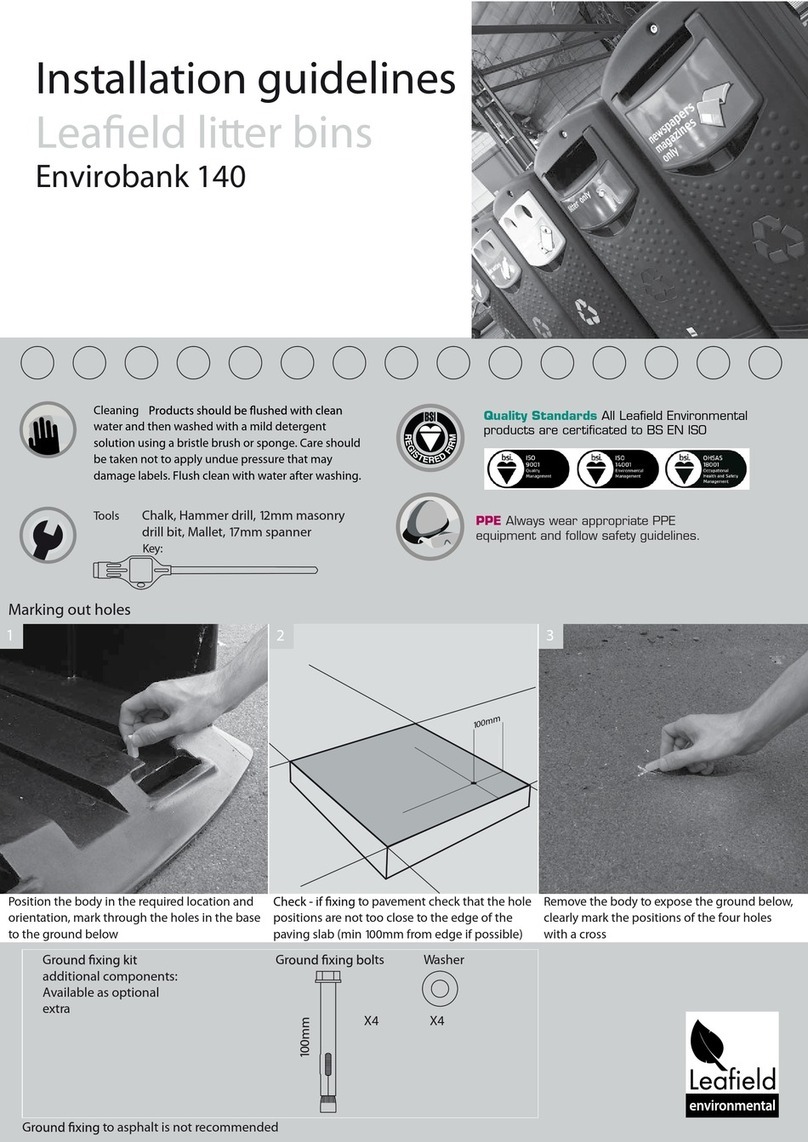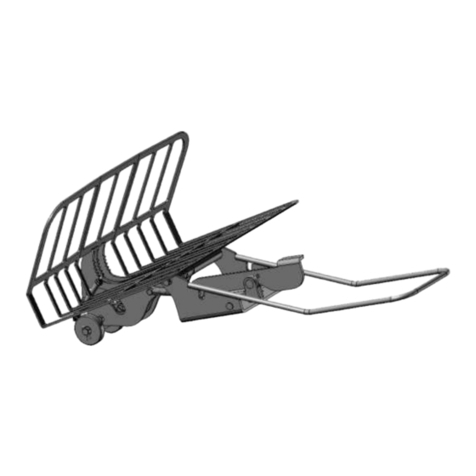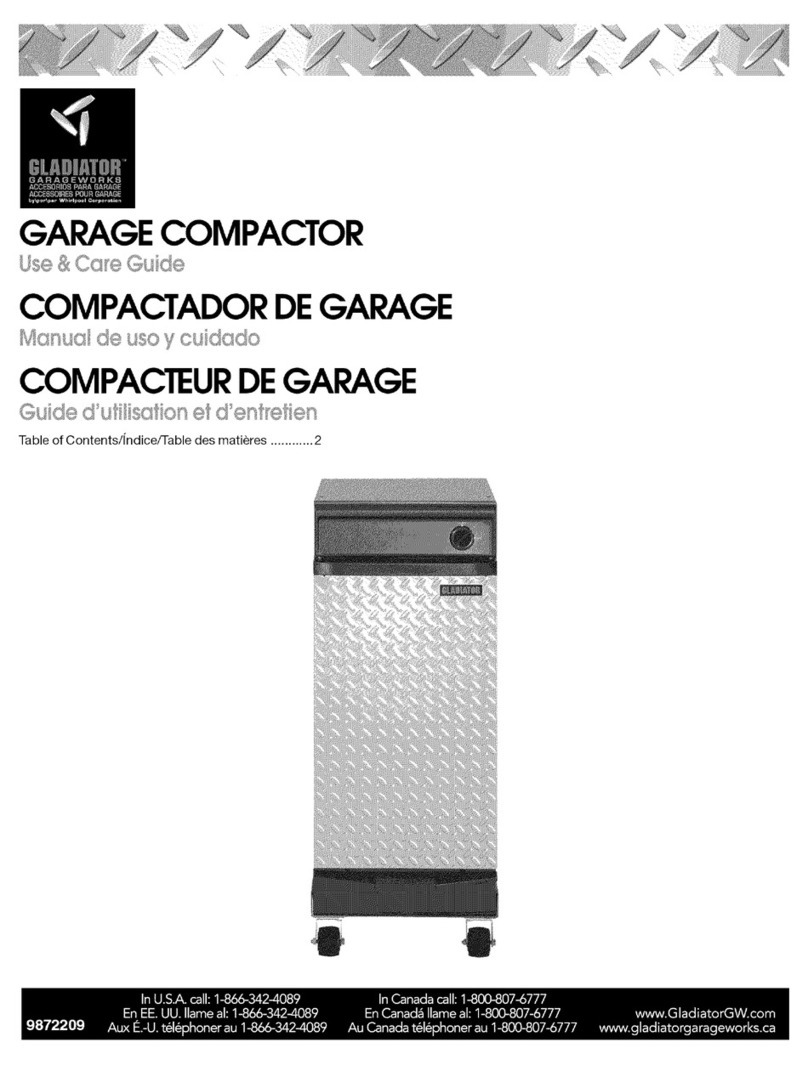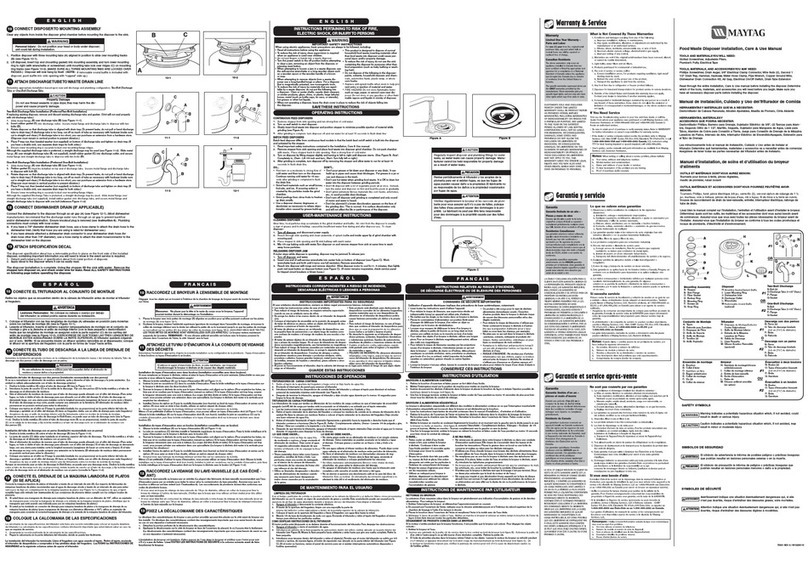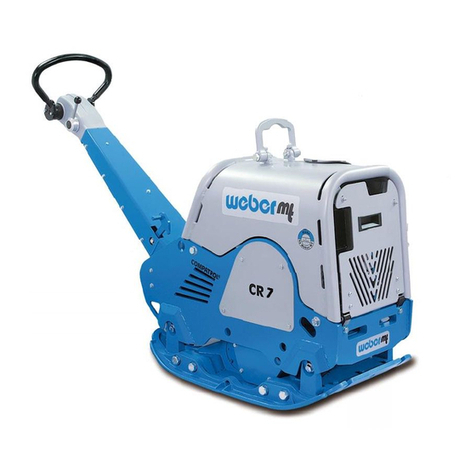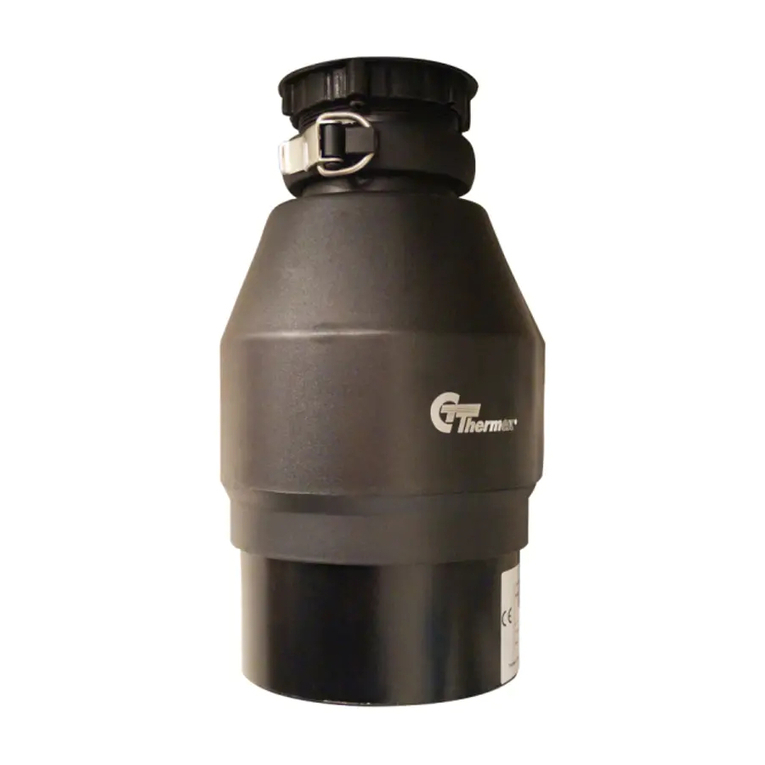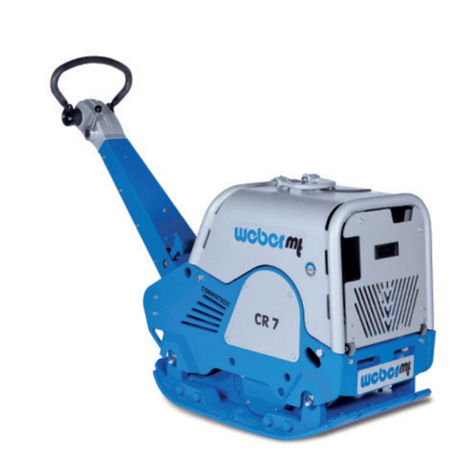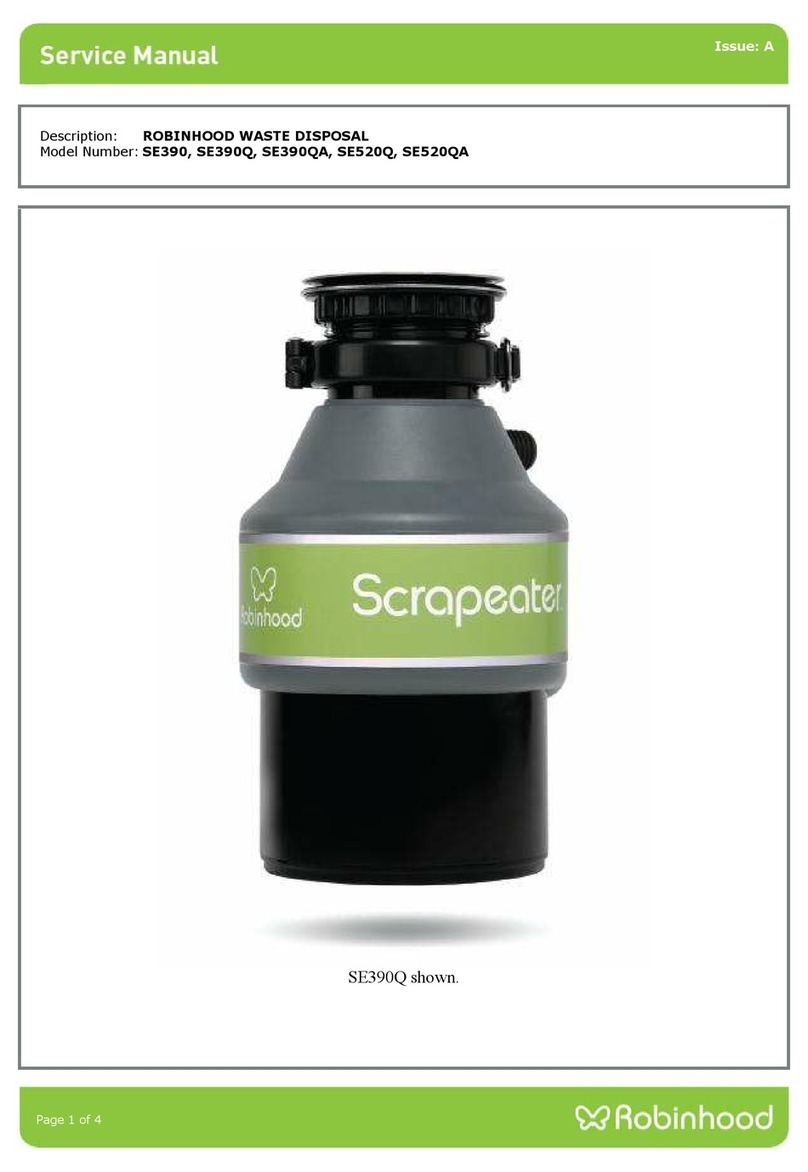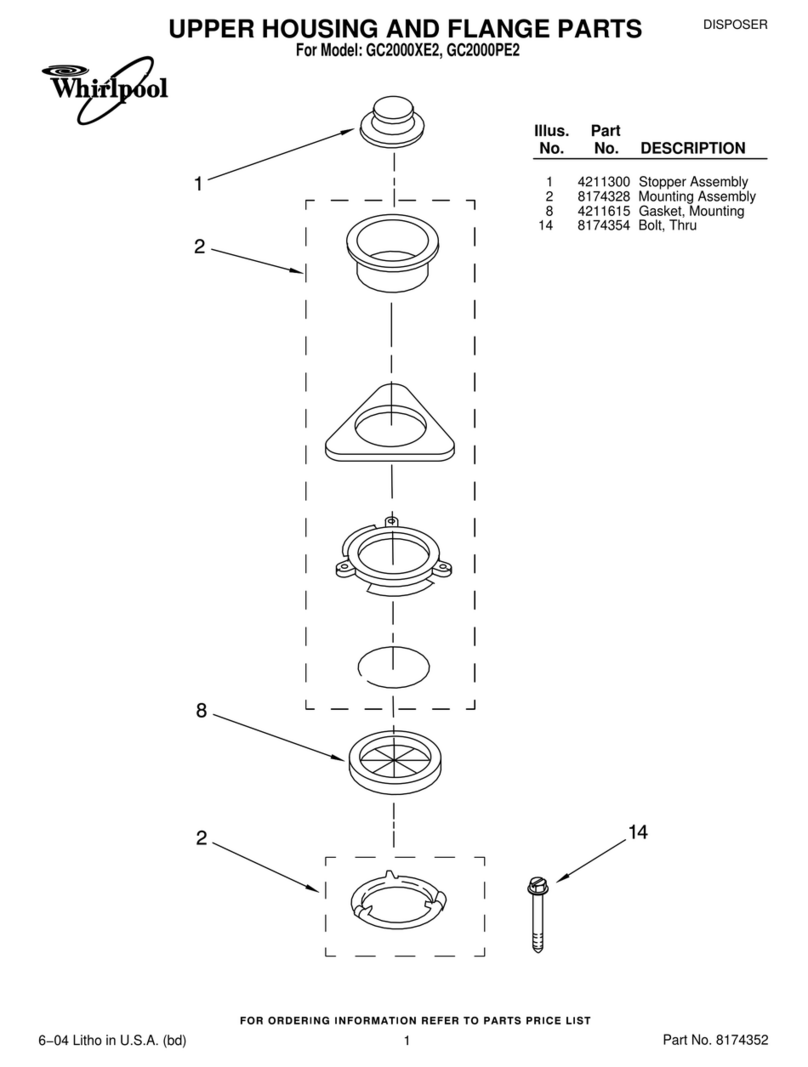
10
fall into the disposer: shells, including oyster, cau-
stic means for cleaning pipes or similar chemical
products, glass, porcelain or plastic, large (hol-
low) bones, metal objects (bottle caps, cans, or
kitchen appliances), hot fat or other hot liquids.
• Replace worn noise glossy screen / installation
gasket / protective reector if they are worn and
are no longer able to prevent waste or water.
• Wenn der Entsorger ausgeschaltet ist, verwen-
den Sie einen Stopper, um dies zu verhindern
Fremdkörper beim Schleifen Kamera. Stellen Sie
sicher, dass die Macht des Entsorgers ist behin-
dert.
• Bevor Sie den Reset-Knopf drücken, den Stau
beseitigen oder Fremdkörper aus der Zerkleine-
rungskammer entfernen, stellen Sie sicher, dass
Das Essen ist ausgeschaltet.
• Halten Sie Hände und Finger außerhalb der
Reichweite von Entsorgungskammer.
BRANDGEFAHR:
Um die Möglichkeit zu minimieren Nicht in der
Nähe von Feuerlöschern lagern Gegenstände wie
Lumpen, Papier oder Aerosoldosen. Lagern oder
benutzen Sie kein Benzin oder ähnliches brenn-
bare Dampf-Gas-Gemische und Flüssigkeit in der
Nähe des Entsorgers.
Folgendes nicht zulassen Kamera-Produkte: Far-
ben, Lösungsmittel, Haushalt Reinigungsmittel
und Chemikalien, Automobilüssigkeiten, Kunst-
stoverpackungen.
HANDBUCH
1. Verwenden Sie den Luftschalter, um den Entsor-
ger zu starten.
2. Senken Sie die Lebensmittelabfälle langsam in
die Kammer und installieren Sie das Filtergitter in
einer vertikalen Position (so dass es durchießt
Wasser) um Lärm zu reduzieren und möglich Wer-
fen von Abfall während des Schleifens.
3. Nachdem der Schleifvorgang abgeschlossen ist,
schalten Sie die Entsorger und lassen Sie das Was-
ser für mindestens 15 laufen s, um die Abusslei-
tung zu spülen.
SOLLTE
• Speisereste unter Druck mahlen kaltes Wasser
nicht weniger als 6 Liter / min.
• Mahlen Sie Feststoe wie kleine Knochen und
Fruchtrückstände zum Reinigen Hackkammern.
• Grind Zitrusfrüchte, Melonen, Gemüse und Kaf-
feebohnen.
• Lassen Sie das Wasser nach dem Schleifen auslau-
fen mindestens 15 Sekunden, um den Abuss zu
spülen Pipeline.
• Ziehen Sie das Produkt aus der Steckdose, bevor
Sie den festsitzenden Rotor mit einem Werkzeug
entfernen.
• Speichern Sie keine Objekte unter dem Display,
um den Zugri auf die Schaltäche zu gewährleis-
ten Neustart.
UNTERLASSEN SIE
• Verwenden Sie kein heißes Wasser beim Schleifen
Reste von Produkten (obwohl heiß Wasser durch
das Produkt zwischen Schleifen).
• Schalten Sie das Wasser oder das Produkt erst aus,
wenn das Schleifen beendet ist. Es ist ein Geräusch
von laufendem Motor und Laufen Wasser.
• Mahlen Sie keine großen Mengen Ei Schalen, fa-
serige Materialien zum Beispiel Mais Schalen, Ar-
tischocken, etc., um ein mögliches Verstopfen des
Rohres zu vermeiden.
• Nur Lebensmittel mahlen.
• Verwenden Sie dieses Gerät nicht zum Schleifen
von harten Materialien wie Glas und Glas Metall.
• Gießen Sie niemals Fett, Öl oder Fett hinein Shell,
da dies zu Verstopfungen führen wird Entwässe-
rungs- und Abwassersysteme.
• Befüllen Sie die Entsorgungskammer nicht mit ei-
ner großen Menge an Reinigungsmitteln Gemüse.
Schalten Sie stattdessen zuerst das Wasser ein und
Entsorger und senken Sie es allmählich Reinigung.
REINIGUNG DER ENTSORGUNGSKAMMER
Im Laufe der Zeit können Fett / Nahrungsmittelpar-
tikel in der Mahlkammer anreichern und schützen
Reektor, der einen unangenehmen Geruch verur-
sacht. Zum Reinigungsmahlkammer und Reektor:
1. Schalten Sie das GERÄT aus und trennen Sie es
vom Stromnetz.
2. Durch die Abussönung mit einem Schwamm
Zum Waschen den Boden reinigen Oberächen
Schutzreektor und Innenoberteil Kanten der
Hackkammer.
3. Setzen Sie den Stopfen in das Abussloch und
